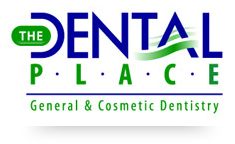From Our Blog:
The dental implant procedure includes a small piece of titanium inserted into gum tissue where tooth loss has occurred. This serves as the base for a cosmetic restoration. The patient will go from tooth loss to a fully functional tooth that is so close to natural, no one will be able to tell the dental implants from biological teeth.
Implant dentistry is a process that can take about one year to complete. Tooth loss can have occurred from trauma, decay or infection, but the cause should not impact the result.
The implant process is initiated by surgically embedding a titanium post into the gum tissue where one or more teeth have been lost. A healing period of four to six months follows this surgery. During this time, the implant will be grafting to bone tissue. The beauty of titanium is that extensive research has proven this metal has unique properties that not only promote metal and bone to merge, but also encourages bone growth in the area of tooth loss. Read More…
As with most illnesses or medical conditions, there are several degrees of severity. The same pertains to gum disease. From the onset of gingivitis to the more serious periodontitis, there are usually many signs that would warrant a visit to The Dental Place in Grand Prairie, TX for an accurate diagnosis and treatment.
Chronic bad breath can be an indicator that you are experiencing gum disease. The usual culprit to halitosis is attributed to the foods we eat. But excess bacteria build-up in the mouth can linger on teeth, gum tissue and in between teeth causing gingivitis and the onset of gum disease. Read More…
Many patients ask the dentist about bleeding gums and whether that symptom is cause for concern. The answer, in short, is a resounding yes! Bleeding gums are never normal, and they often indicate a mild form of gum disease known as gingivitis.
Gum disease is a progressive condition, and as it advances, it causes more damage to your gum tissue. In its most severe forms, gum disease can even lead to tooth and bone loss.
Fortunately, the mildest form of gum disease can be readily treated by your dentist with a thorough professional cleaning. If you act early, you can avoid the more invasive treatments that are needed for advanced periodontal disease. Read More…

